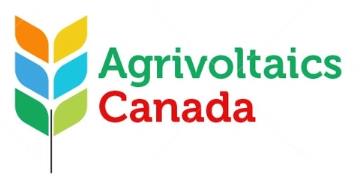Agrivoltaics Canada acknowledges the Government of Alberta’s decision to temporarily halt approvals for renewable energy projects, emphasizing the importance of effective land use and responsible decommissioning of energy projects. Both food and energy production are pivotal for Alberta’s sustained prosperity. It’s crucial to strike a balance, ensuring that energy projects are decommissioned responsibly without compromising food production. Agrivoltaics champions this balance by supporting traditional agriculture while simultaneously producing clean energy. We advocate for regulations that ensure proper planning and funding for decommissioning, protecting future generations from potential costs. We extend an invitation to the Government of Alberta, the Alberta Utilities Commission (AUC),
and the Alberta Electricity System Operator (AESO) to recognize Agrivoltaics as a viable solution.
Agrivoltaics is a synergy of agriculture and energy, optimizing land use by integrating solar power with farming. In Alberta, not all sunlight hours are essential for optimal crop growth. Some crops even face stress due to excessive sunlight. Photovoltaics can thus enhance crop yields by regulating light exposure and converting surplus sunlight into electricity. This not only boosts land productivity but also benefits crops by retaining soil moisture and shielding them from adverse weather.
Agrivoltaic systems are adaptable and designed for the specific needs of crops. With configurations like raised mounts, expanded panel spacing, and variable tilting, agrivoltaics ensures optimal light for crops. The rising adoption of agrivoltaics offers farmers diversified income, promotes efficient land use, and produces clean energy. With the decline in solar module costs in recent years, agrivoltaics has become economically feasible. Current energy prices in Alberta, coupled with Renewable Energy Credits, make agrivoltaics a self-sustaining model without the need for subsidies.
Farmers today face challenges with escalating land values and diminishing returns. In 2020, farm debt reached unprecedented levels, exacerbated by the current high-interest rate environment. A significant number of farmers are nearing retirement without clear succession plans. Agrivoltaics offers farmers a beacon of hope, providing long-term financial stability and diversification, enabling them to weather economic uncertainties and uphold food security.
The surge in Alberta’s renewables sector has understandably led to land-use conflicts. Countries worldwide, especially land-scarce regions like Germany, Italy, and France, are pioneering agrivoltaic policies. For instance, German legislation mandates that solar projects on farmland must retain at least 2/3 of the prior production level. Our estimates suggest that Canada could meet a third of its energy needs using just 1% of its arable land, without significantly affecting food production.
Bipartisan support for agrivoltaics in the US, as demonstrated by the recent Agrivoltaics Research and Demonstration Act of 2023, underscores its potential to bridge rural-urban divides. Alberta’s investment in renewable energy has seen a meteoric rise from $34 million in 2017 to $2.4 billion in 2021. This growth aligns with the Barton Report’s vision for Canada’s agri-food sector, which it identifies as a strategic sector with significant untapped growth potential. The report set an ambitious target of $75 billion in agri-food exports by 2027, which would position Canada as “the trusted global leader in safe, nutritious, and sustainable food for the 21st century.” Agrivoltaics, by its very nature, supports this vision and would ensure that Alberta remains a powerhouse in both food and energy production. By integrating agrivoltaics, we address concerns about developing solar on farmland, align with the national vision of becoming a net exporter of food, and help achieve carbon reduction in the energy sector.
In conclusion, Agrivoltaics Canada is poised to bridge the gap between agriculture and renewable energy. We are eager to collaborate with the Government of Alberta, the AUC, and the AESO to bring this vision to fruition. We urge the government to recognize the potential of agrivoltaics in addressing land-use concerns and advancing clean energy initiatives. As a proactive measure, we request to be involved in Alberta’s renewable energy land use policy development, championing a future where agriculture and clean energy coexist, driving Alberta’s economic success.
Agrivoltaics Canada acknowledges the Government of Alberta’s decision to temporarily halt approvals for renewable energy projects

Agrivoltaics Canada Media Response
In response to Canada's Online News Act and Meta (Facebook and Instagram) removing access to Canada's local news from their platforms, Anchor Media Inc encourages you to get your news directly from your trusted source by bookmarking this site and downloading the Rogue Radio App. Send your news tips, story ideas, pictures, and videos to info@anchormedia.ca.



